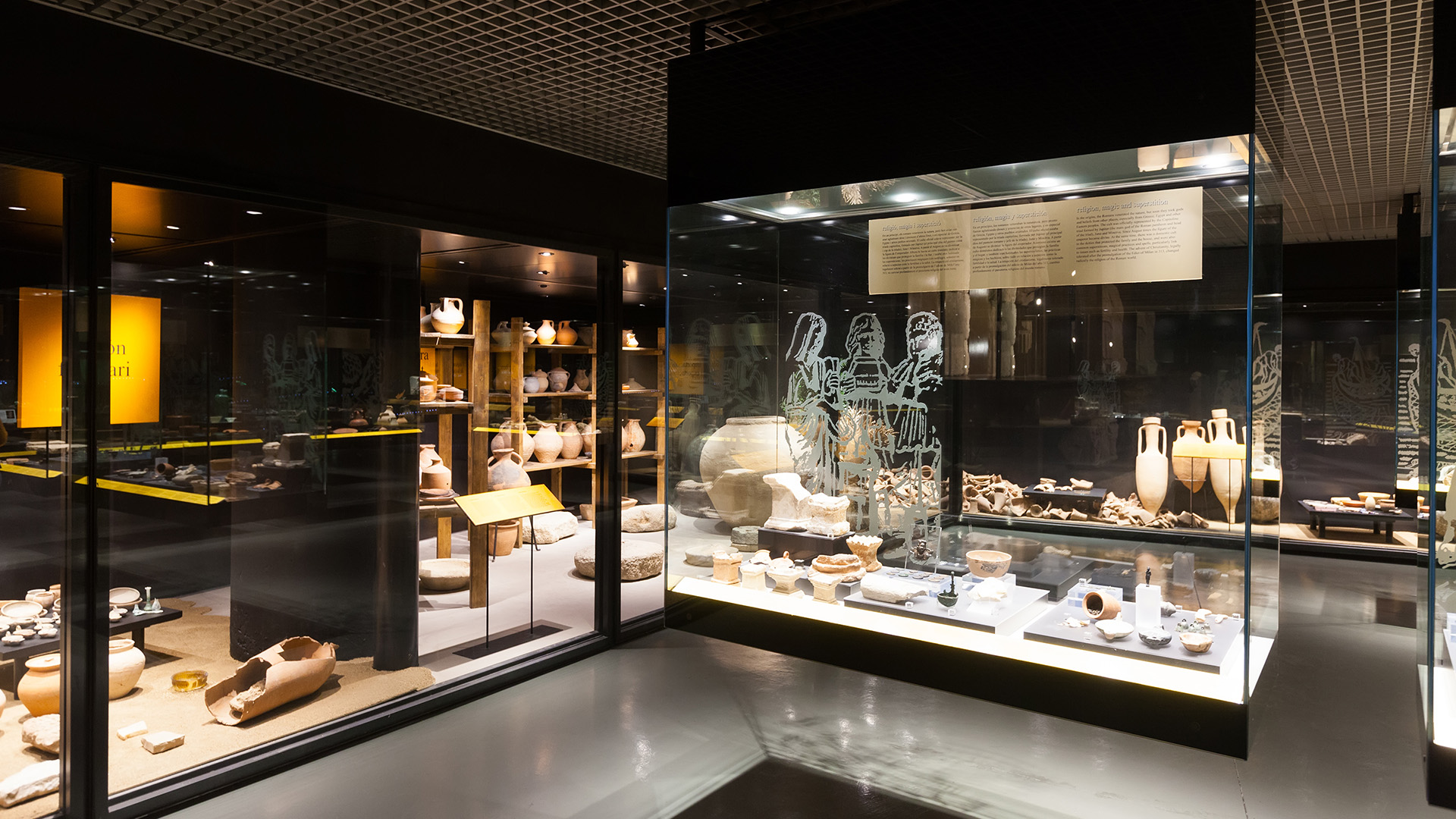This article was co-authored with Rose Cox and Jessica Markabawi.
Colonisation, war crimes and international organised crime have resulted in the unlawful movement of cultural materials and artworks from one country to another. Whilst there has been a long-held belief that “looting cultural heritage is wrong and stolen objects should be returned to their rightful owner”, the inclination to organise the return of stolen objects only emerged in the 1950s.1 Today, repatriation has received a renewed surge of public interest as famous artefacts such as the Benin Bronzes and Parthenon Marbles have been the subject of repatriation efforts and significant media scrutiny.2 Museums are also starting to show a greater interest in repatriating objects of significance to communities from which they originate. Earlier this year the Manchester Museum handed over 174 cultural heritage items to a delegation of women from the Anindilyakwa community of Groote Eylandt, an island in the Northern Territory.3 There have also been discussions around returning the Parthenon Marbles to Greece in exchange for ancient artefacts that have never been seen in the United Kingdom before.4
Repatriation refers to the return of “stolen or looted cultural material to their countries of origin”.5 In this context, ‘cultural materials’ refers to art and objects of cultural significance, including the remains of ancestors. Current discourse around repatriation typically refers to the return of stolen works from museum, universities, and private collections.
Repatriation is distinct from restitution, although the terms are often conflated. ‘Repatriation’ refers to returning cultural material to its country of origin. ‘Restitution’ refers to returning cultural material to an individual or community group.6
There are several challenges which arise in the repatriation of cultural material. Some key difficulties include:
- Determining the ‘rightful’ owner – this can be especially difficult if the cultural material was obtained during times of conflict or, in the case of some ancient artefacts,7 if the source country no longer exists, such as Mesopotamia. Whilst there may be a new country on similar land, changes to borders can lead to a contest over the rightful owner of the artefact;8
- The perception that provenant countries do not have sufficient facilities or resources to preserve the cultural material – this perception can be fuelled by the idea that the museum or institution that currently houses the cultural material has ‘protected’ it so far and to move it may cause it irreparable damage;
- The argument that some cultural materials were obtained legally at the time of their acquisition – whilst our attitudes towards property ownership have changed, and we may now perceive some historical acquisition laws as ‘unjust’, some argue that this does not justify repatriation;
- Repatriating some stolen or looted property may open the floodgates to a number of theoretical claims by various countries for the restitution of their artefacts; and
- If museums or cultural institutions repatriate all stolen or looted property, they may have little to no objects left in their collections – the balance between returning stolen cultural material and maintaining cultural institutions is perceived to be a significant obstacle in repatriating cultural material.
This article provides a brief overview of the international and domestic law that guides repatriation efforts in Australia.
International Repatriation and Law
Before exploring repatriation in Australia, it is important to consider the international legal context which has informed repatriation efforts internationally and in Australia. There are three key instruments to consider. These instruments have identified that cultural materials are often looted as a consequence of conflict, guide the way in which cultural materials should be returned and how the conduct of those who have stolen or destroyed cultural materials should be addressed.
- The Hague Convention: At the end of the Second World War, UNESCO produced the Convention for the Protection of Cultural Property in the Event of Armed Conflict (the Hague Convention) which Australia ratified. This Convention was supplemented by the First and Second Protocols to the Hague Convention of 1954 for the Protection of Cultural Property in the Event of Armed Conflict which were adopted in 1954 and 1999, respectively, however Australia is not a party to either of these protocols.
Article 4 of the Hague Convention requires that contracting parties “respect cultural property situated within their own territory as well as within the territory of other High Contracting Parties by refraining from any use of the property and its immediate surroundings or of the appliances in use for its protection for purposes which are likely to expose it to destruction or damage”9
- The Rome Statute: The Rome Statute of the International Criminal Court (the Rome Statute) classifies the intentional destruction of cultural property as a war crime under Article 8.10 Australia is a party to the Rome Statute and has stated its commitment to the objectives contained therein.11
The International Criminal Court has prosecuted this war crime on several occasions, one of the most recent cases of note being the prosecution of Ahmad al-Faqi al-Mahdi who plead guilty to directing the destruction of ten religious sites in Timbuktu Mali.12
- The UNIDROIT Convention: The 1995 UNIDROIT Convention on Stolen or Illegally Exported Cultural Objects (the UNIDROIT Convention) calls for the return of illegally excavated and exported property to be returned.13 Australia is not a party to this convention.
The UNIDROIT Convention defines cultural objects as “those which, on religious or secular ground, are of importance for archaeology, prehistory, history, literature, art or science and belong to one of the categories listed in the Annex to this Convention”.14 The annexure to the UNIDROIT Convention contains a broad list of cultural materials, including antiquities and written materials. The UNIDROIT Convention outlines the steps for resolving a claim of restitution and is underpinned by the principle that “the possessor of a cultural object which has been stolen shall return it”.15
These instruments have informed significant repatriation efforts overseas. Australia has however, taken a more policy-driven, rather than legalistic, approach to repatriation.
Repatriation in Australia
Importantly, “within Australia, despite a growing number of policies and principles put in place by governments and museums, there is actually little legislation, or even case law, to compel repatriation”.16 There is some state-specific legislation which can also be applied to questions of repatriation, however, the legislation that is typically referred to in a repatriation context is Commonwealth legislation, being:
- Aboriginal and Torres Strait Islander Heritage Protection Act 1984 (ATSIHP Act):17 this Act requires the return of First Nations’ objects of cultural heritage upon notification to the Minister for the Environment and Water.
- Environment Protection Biodiversity and Conservation Act 1999 (EPBC Act):18 this legislation is the main legislation for the protection of “nationally important flora, fauna, ecological communities and heritage places”.19 It generally has limited application in matters concerning the repatriation of cultural materials, but has been used in the reburial of Aboriginal Ancestors Remains, once these remains were repatriated.20
- Protection of Movable Cultural Heritage Act 198621 (PMCH Act): this Act is aimed at ensuring that objects of cultural significance remain in Australia. It also provides for the return of foreign cultural property which has been illegally exported from other countries and imported into Australia.
There have been a small number of matters which have litigated the repatriation of foreign cultural property imported into Australia, most recently the decision of BC Galleries (Vic) Pty Ltd v Commonwealth, which concerned the return of some 7 objects which were seized from BC Galleries and were said to be rightfully owned by the People’s Republic of China and the Philippines.22 These objects were obtained by federal officers after raiding BC Galleries and seizing 43 items they believed to be of dubious providence.23 The case was brought by BC Galleries under section 34 of the Protection of Movable Cultural Heritage Act 1986 (Cth) seeking forfeiture of the objects that the Commonwealth had confiscated. The Court found that the Commonwealth did not establish on the balance of probabilities that the items were liable to be forfeited pursuant to the test in section 14 of the PMCH Act and consequently ordered the Commonwealth to forfeit these objects back to the Applicant gallery.24
The repatriation movement in Australia, whilst somewhat supported by the above legislation, is largely driven by Federal Government policy and supported by the private museum and gallery sector. The Australian Federal Government is currently focusing its repatriation efforts on the return of First Nations artefacts to Australia.
As discussed in our earlier article, the Federal Advisory Committee for Indigenous Repatriation (Committee) was established to provide advice to the Australian Government on repatriation matters.25 The work of the Committee is supported by the private museum and gallery sector, with some institutions developing their own advisory bodies or guidance notes on the process of repatriating Indigenous cultural materials.26
This is not to say that the Federal Government and private institutions do not have an appetite for repatriating stolen art which is in our galleries. The National Gallery has recently returned several key paintings which it obtained from Subhash Kapoor, after concluding that many of them were likely stolen or looted from India.27
Next Steps
Whilst one option to encourage repatriation may be to pass specific legislation, this may not be the simplest or most effective way to encourage repatriation by private institutions. Alternative methods that can encourage repatriation include:
- Private Agreements between art institutions for the return of key artefacts in exchange for other cultural materials to be loaned. This strategy is currently a proposed arrangement in the case of the Parthenon marbles.28
- Creating an accessible cross-border resource documenting works and the gaps in their provenance to support academic institutions and private organisations in the closing of information ‘gaps’29 and facilitating the return of objects. This is needed as there is often a significant deficit in evidence determining the provenance of an artwork when it has been obtained through crime or from a location where there is armed conflict.
- Increased publicity surrounding repatriation efforts can also create ongoing reputational incentives for private institutions to consider their collections and possible repatriation efforts that may appease public concern.
Conclusion
There is a growing swell of public interest in repatriation, which is encouraging lawmakers and private museums, galleries and collectors to return stolen or looted art to its rightful place. It is a needed, albeit significantly delayed step towards restorative justice, that encourages cross-border communication, reconciliation and just practices in the arts and culture industry. Whilst ongoing resistance to repatriation is inevitable in the international context, the Australian Federal Government has made significant advances in its First Nations and international repatriation efforts.












